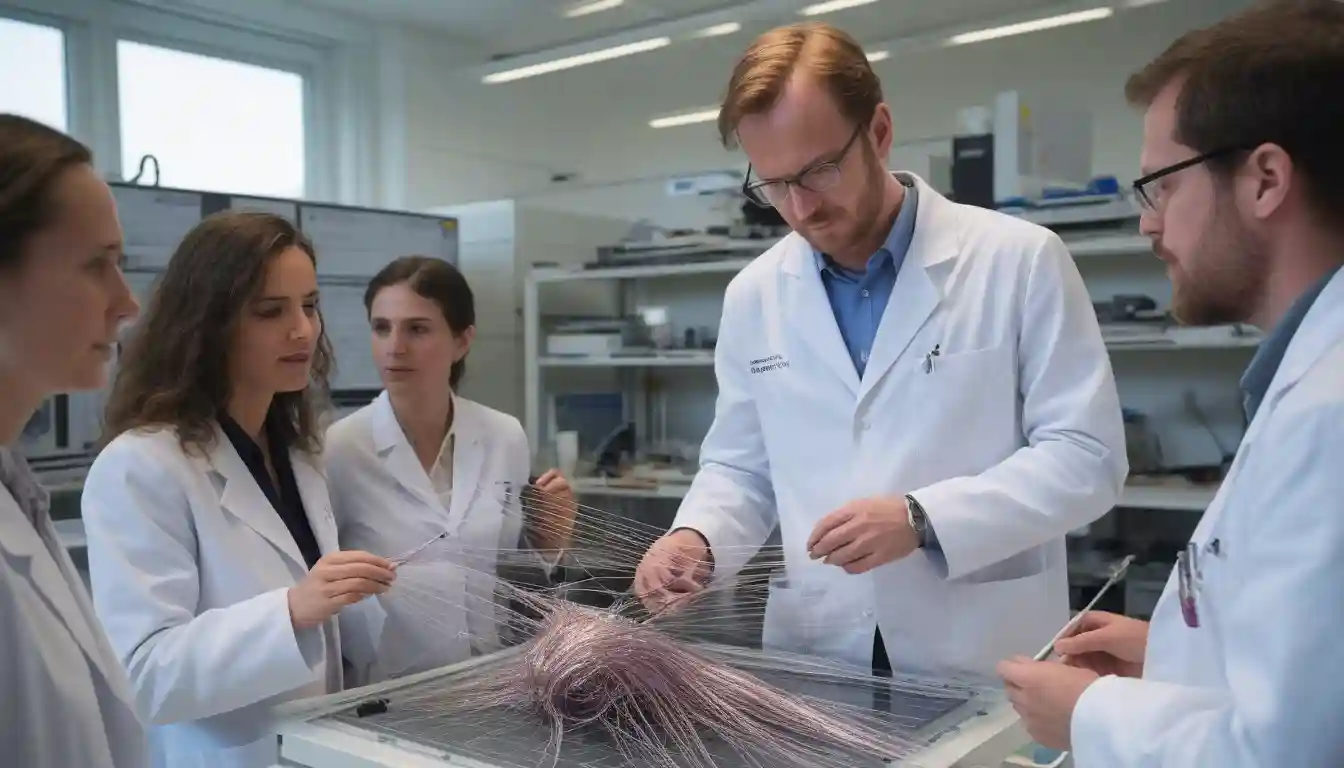
Revolutionizing Robotics: Breakthrough Artificial Muscle Technology from ETH Zürich and Max Planck Institute
Revolutionizing Robotics: Breakthrough Artificial Muscle Technology from ETH Zürich and Max Planck Institute
ETH Zürich and the Max Planck Institute for Intelligent Systems have collaborated to introduce an innovative artificial muscle technology that could significantly advance the capabilities of modern robots. This cutting-edge technology utilizes a hybrid electro-hydraulic system, representing a pivotal leap in robotics design and functionality. With oil-filled plastic pouches covered in electrodes, these artificial muscles are designed to mimic the flexibility and contraction of natural muscles, offering robots enhanced agility and performance, particularly on uneven terrains.
Hybrid Electro-Hydraulic System: A Game-Changer in Robotics
The heart of this new artificial muscle technology lies in its electro-hydraulic system, which combines oil-filled pouches and a layer of electrodes. When a voltage is applied, these electrodes trigger the oil-filled bags to contract, simulating the movement of human muscles. This design allows robots to navigate challenging environments with increased precision and agility, enabling them to leap higher and maneuver with greater ease than ever before.
This technology offers a superior alternative to traditional electric actuators by improving both durability and energy efficiency. The use of lower voltages not only increases safety but also reduces energy consumption, making this system more practical for real-world applications. This makes it a promising solution for industries requiring safe, efficient, and compact robotic designs.
Unlocking New Possibilities for Soft Robotics
Experts are optimistic about the future applications of this technology, particularly in soft robotics. This development could revolutionize various fields, as the artificial muscles are adaptable for both land and underwater operations, thanks to their waterproof and self-sealing properties. Whether used in manufacturing, healthcare, or exploration, these robots are expected to perform tasks that were once impossible for their rigid counterparts.
Soft, bio-inspired robots offer a range of benefits: they are safer around humans, can achieve complex movements with minimal energy, and are lightweight and compact. These qualities make them ideal for diverse environments and industries, from assisting in delicate medical procedures to operating in hostile environments like underwater or space exploration.
Paving the Way for the Future of Robotics
This breakthrough marks a significant step forward in the field of soft robotics. With the development of artificial muscles that are more lifelike, flexible, and efficient than previous iterations, this technology opens the door to new possibilities. By enabling robots to perform more complex tasks with less energy, this system sets the foundation for the next generation of robotics — one that is capable of working alongside humans safely and effectively.
As industries increasingly embrace robotics, this innovation is set to play a crucial role in shaping the future of automation. The combination of advanced material science and robotics engineering could lead to more widespread use of lifelike, adaptable robots across sectors, redefining the boundaries of what robots can achieve.
Conclusion
The collaboration between ETH Zürich and the Max Planck Institute for Intelligent Systems has resulted in a groundbreaking advancement in artificial muscle technology. This hybrid electro-hydraulic system is set to change the landscape of soft robotics by offering robots greater agility, efficiency, and flexibility. As this technology continues to evolve, its potential applications in fields ranging from healthcare to industrial automation are vast, promising a future where robots are more efficient, lifelike, and integrated into everyday life.
The artificial muscle technology is more than just an incremental improvement—it's a glimpse into the future of robotics, where soft, bio-inspired systems enhance the capabilities of robots in ways that were once unimaginable.
Key Takeaways
- ETH Zürich and Max Planck Institute launch a hybrid electro-hydraulic artificial muscle system for robots, optimizing mobility and elevation without additional sensors.
- Robotic muscles are regime-changing components, utilizing oil-filled plastic bags with electrodes in a configuration reminiscent of ice cube trays.
- The system operates with minimal heat production, diverging from the inefficiency associated with standard electric actuators.
- The technology holds potential for integration into rescue robots, albeit preliminary restrictions on its current capabilities.
Analysis
The introduction of this groundbreaking hybrid electro-hydraulic artificial muscle technology has the potential to revolutionize various industries, particularly in rescue operations and emergency response scenarios. This innovation promises to significantly enhance efficiency and durability for robotics firms and emergency response teams, potentially leading to widespread advancements in manufacturing and healthcare robotic applications. As this technology undergoes further refinement and integration into diverse robot types, it has the possibility of reshaping industry standards and prompting market shifts, attracting investment from both established companies and burgeoning startups.
Did You Know?
- Hybrid Electro-Hydraulic System: An innovative blend of electrical and hydraulic components driving robotic muscle actuators. In this context, the system harnesses electrical voltage to manipulate the expansion and contraction of oil-filled plastic bags, serving as hydraulic actuators. This pioneering approach amalgamates the precise control of electrical mechanisms with the robust power delivery capabilities of hydraulic systems, facilitating dynamic and efficient robot movements.
- Artificial Muscles: Synthetic components designed to replicate the functionality of biological muscles, crucial for the movement and flexibility of robots. The landmark development by ETH Zürich and the Max Planck Institute harnesses a novel hybrid electro-hydraulic system, enabling robots to execute complex movements such as traversing uneven terrain and achieving heightened jumps compared to traditional electric-powered robots.
- Electric Actuators: Mechanisms that convert electrical energy into mechanical motion. Traditional electric actuators, frequently employed in robotics to facilitate joint and limb movement, often produce substantial heat during operation, which can impair efficiency and longevity. The new hybrid electro-hydraulic system developed by the researchers addresses this issue by curbing heat generation, potentially rendering it more efficient and suitable for extensive use in various robotic applications.